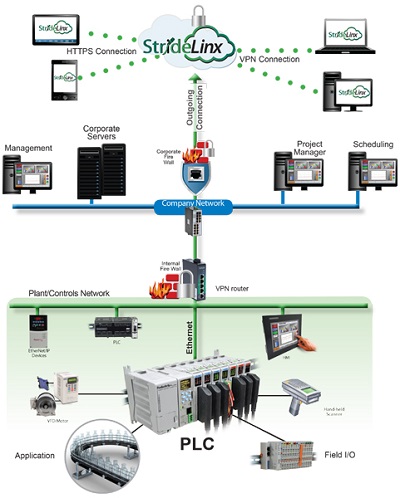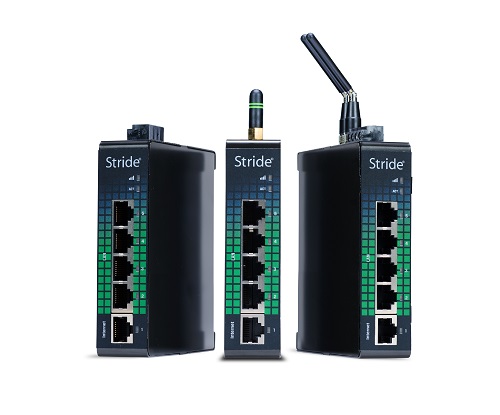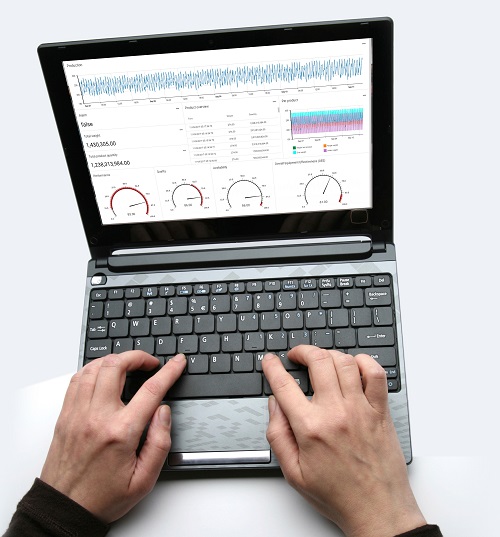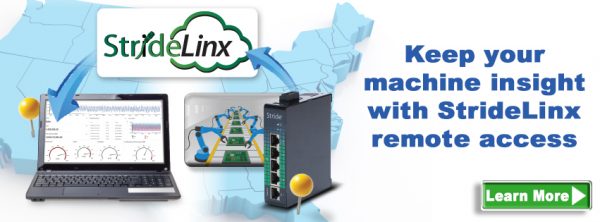Jonathan Griffith, Product Manager, Industrial Communications & Power Supplies at AutomationDirect, wrote an article for Motion Control (NASA Tech Briefs) Feb 2018 titled Simplifying Cloud-based Remote Access and Data Logging discussing how it is becoming easier to connect to the IIoT using cloud-based remote access to monitor, program and maintain machine control systems.
A hosted VPN router is the key to connect the cloud to programmable logic controllers (PLCs), motion control systems, human machine interfaces (HMIs) and IIoT-ready field devices. Griffith had some great comments in the article on how machines are becoming smarter, and how data can be remotely gathered and stored and then accessed anytime, anywhere—all through a secure cloud connection.
A Hosted VPN Secures Cloud-Based Remote Access
The article gets right to the point: the IIoT requires a secure remote access solution to collect, store and share data.
Hosted VPN solutions have become popular for industrial applications because they provide a secure VPN connection, while making setup much easier by simplifying network configuration. A typical hosted VPN solution includes the following components: VPN router, hosted VPN server, VPN client, and connected components.
This example StrideLinx Secure Remote Access network block diagram shows a hosted VPN solution.
 Griffith talks about how a secure VPN tunnel is used, and then discusses data usage. Most hosted VPN solutions have a free monthly bandwidth allocation for basic operation, and then offer a premium plan for additional bandwidth. Normal troubleshooting and programming needs should fall under the data requirements in the free plan, but data monitoring may require additional bandwidth depending on the amount of data transmitted over the VPN.
Griffith talks about how a secure VPN tunnel is used, and then discusses data usage. Most hosted VPN solutions have a free monthly bandwidth allocation for basic operation, and then offer a premium plan for additional bandwidth. Normal troubleshooting and programming needs should fall under the data requirements in the free plan, but data monitoring may require additional bandwidth depending on the amount of data transmitted over the VPN.
He also pointed out that a hosted VPN router is simple to configure. For example, these AutomationDirect StrideLinx VPN routers provide easy cloud-based connectivity because they are supplied preconfigured for connection to a predefined cloud server, so the user simply has to add basic network information.

How to Select a Hosted VPN
Griffith included a list of requirements for a hosted VPN solution as listed in the following Table.
Table, Hosted VPN Requirements
- Single vendor for hardware and cloud service
- Simple setup
- Web-based platform for configuration
- Secure hosted VPN
- Customized user permissions
- Cloud data logging capable
- Wireless communication options
- Safety lockout
Using a single vendor not only simplifies purchase and implementation, but also provides support for the entire system, as opposed to coordinating among multiple vendors. If different vendors are used, for example one for data logging and another for remote access, it can often be difficult to ascertain which one to call for assistance, with each often blaming the other for any problems. Using a single vendor alleviates these types of issues, particularly if the vendor offers free support.
Griffith also discussed how a web-based platform provides easy configuration, and wrote about the necessity of following encryption standards for security. The router should have cloud-based data logging capability, along with a variety of communication options including wired LAN, Wi-Fi and 4G LTE. Check out the original article for more details.
For additional safety and security, Griffith also pointed out an important safety feature for the VPN router, which is a digital input for a switch to locally enable or disable communications, preventing remote control of a machine during maintenance periods.
Cloud Storage and Access Provided
Data storage and monitoring in a cloud platform allows users to configure dashboards using widgets for remote access viewing (Figure 3) on their PC or mobile device. Alerts and notifications can be configured to inform users when parameters fall outside of a predefined range.

Using a hosted VPN solution, the data is hosted in the cloud by the router vendor, and can be accessed by the machine builder or the client, using an HTTPS or VPN connection. With HTTPS, any web-enabled device can access the cloud data and dashboards for monitoring. A PC and VPN connection is needed for remote access through the hosted router for programming a PLC, HMI or motion controller.
Connect Components at the Edge
Griffith provides details on connecting smart devices and controllers. Whether it’s a serial interface to a controller, a protocol conversion module converting a serial interface to an Industrial Ethernet protocol such as Modbus TCP/IP, or a built-in digital communication interface such as EtherNet/IP—most Ethernet-connected devices can connect to a VPN router, which can then forward data to the cloud for storage.
In each of these cases, drive data is available via an Ethernet link, critical for IIoT implementations and connections to HMIs, databases and the cloud. The protocol for these connections is some variant of Ethernet, and the network can be either a wired, Wi-Fi or cellular connection to the cloud.
In the end, Griffith sums up how to connect your machine or motion controller to the cloud. Making a motion control system smart requires an IIoT implementation, typically provided via secure, cloud-based connectivity for data storage and access. Although there are many ways to provide this cloud connectivity, the simplest is the one described in this article—a hosted VPN—with hardware, software and support provided by a single vendor.
For more articles on communication, click here.
[hozbreak]


